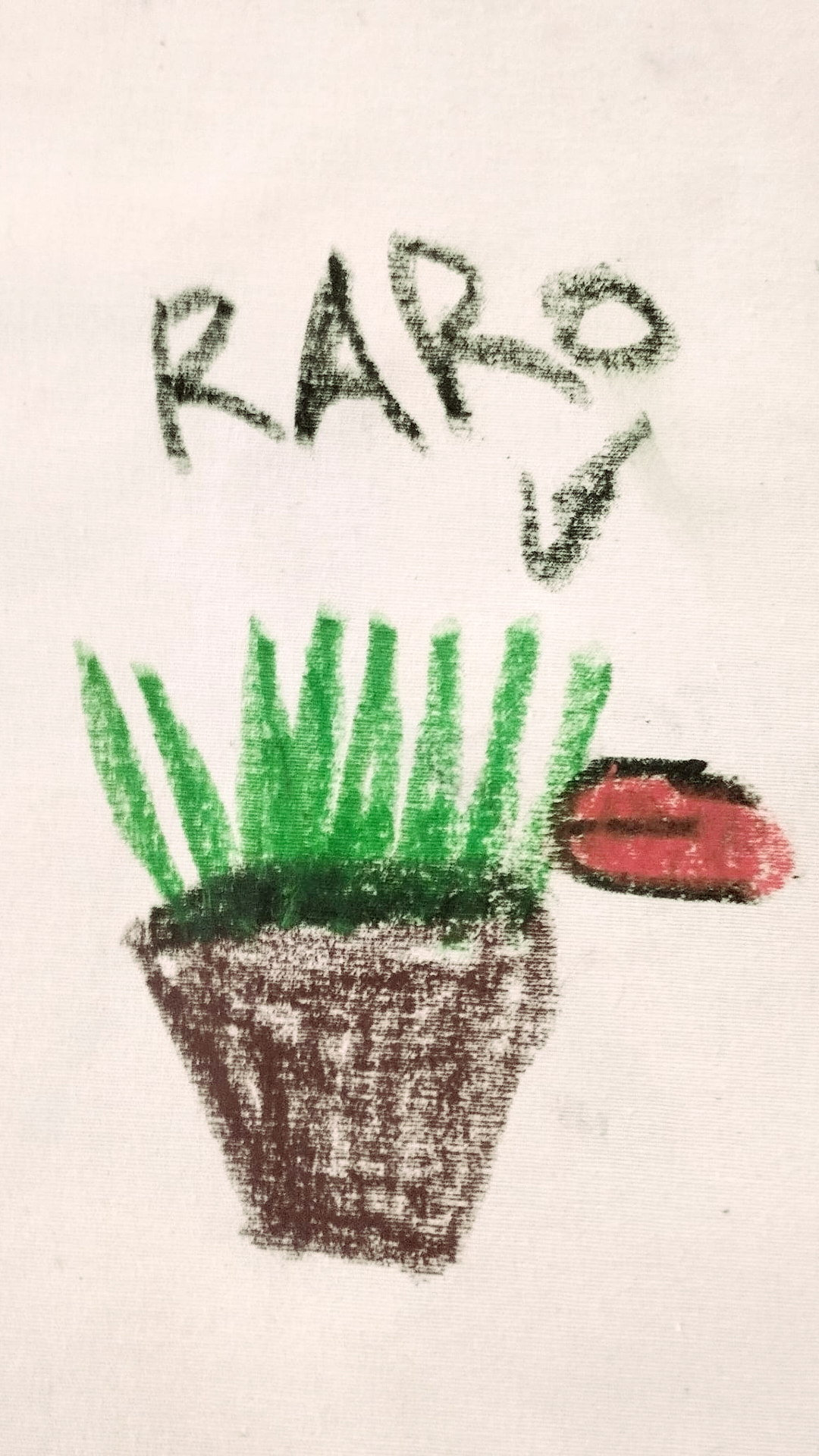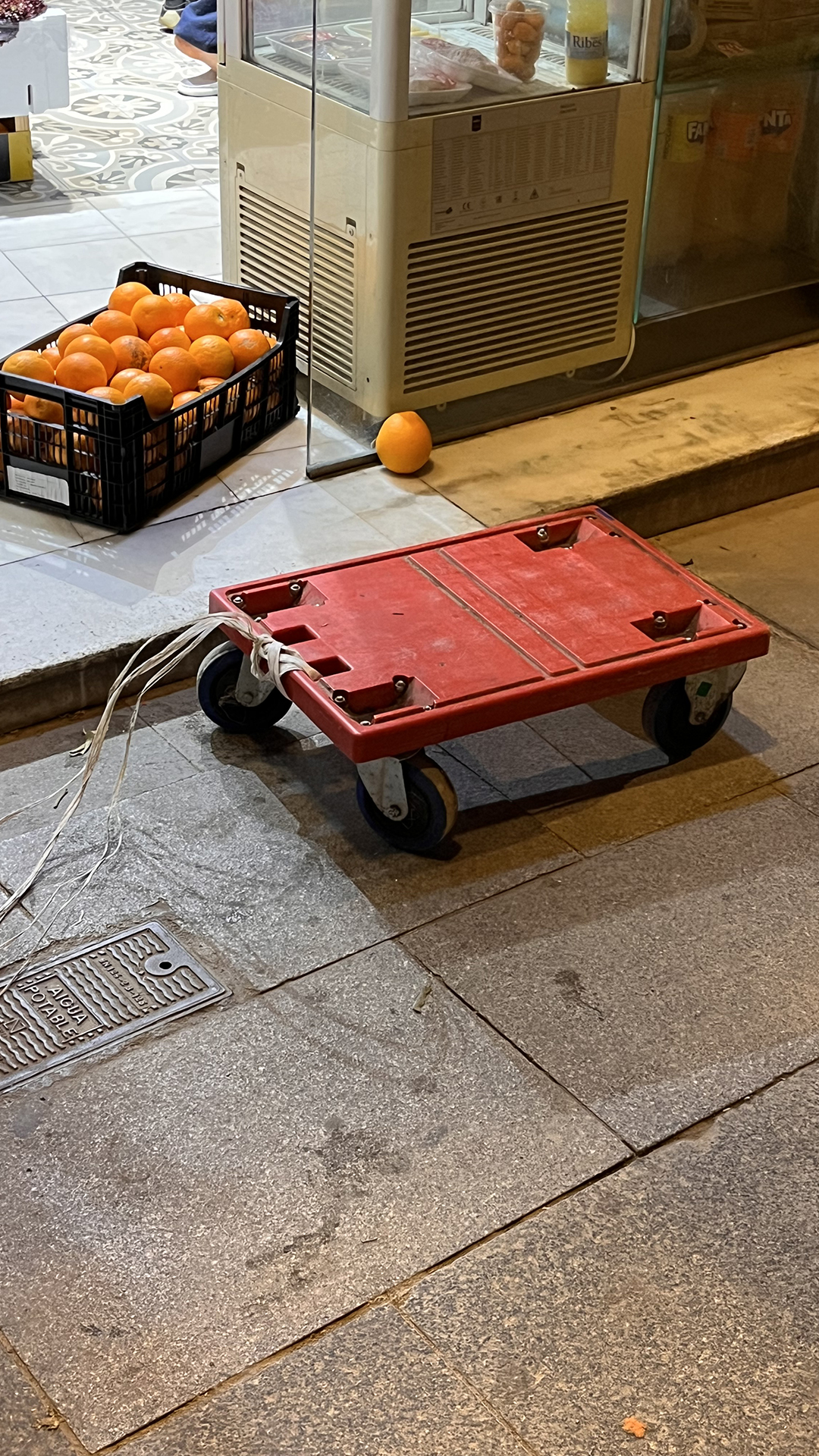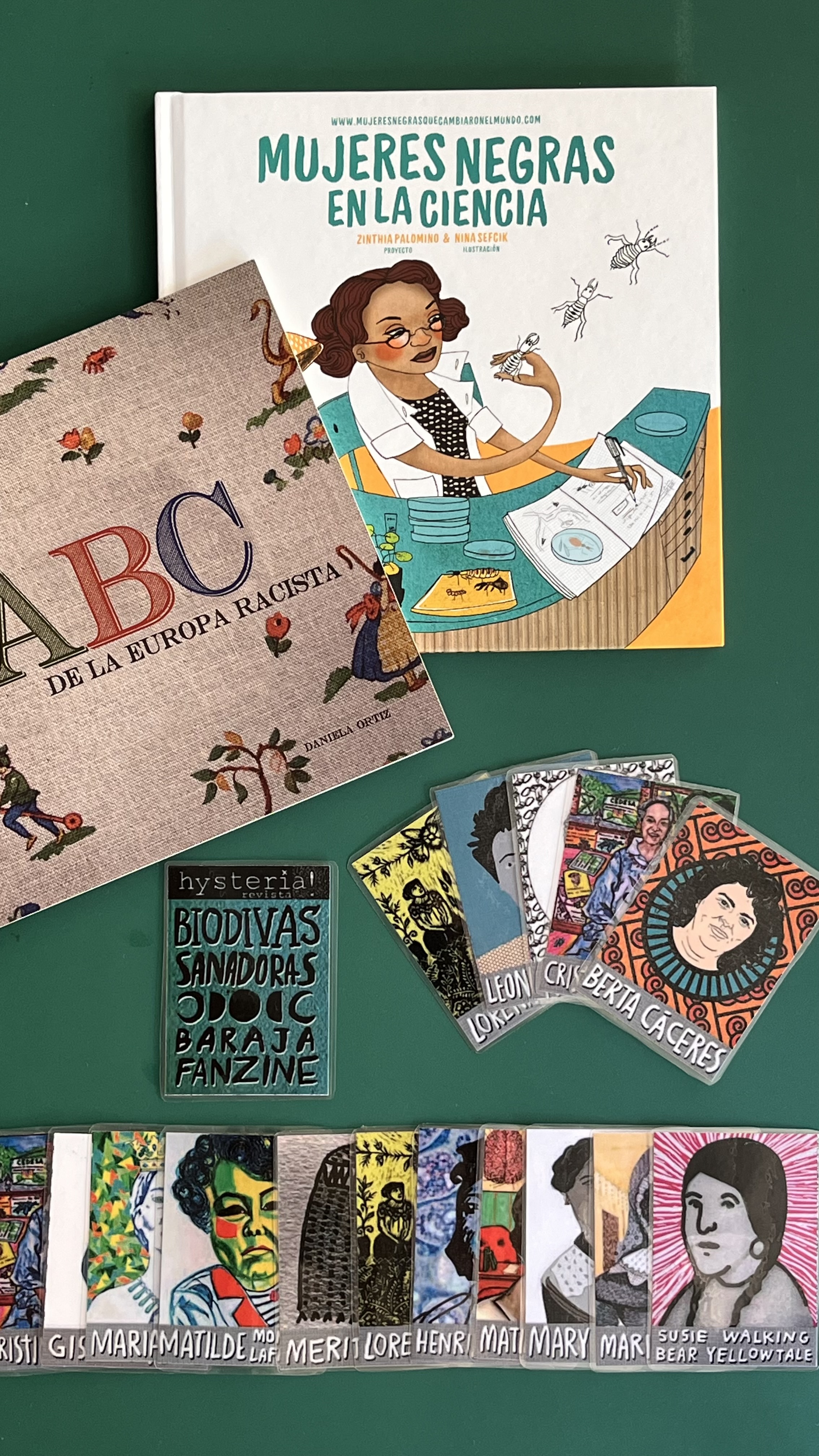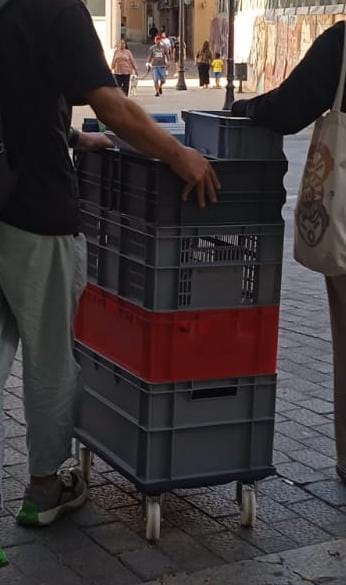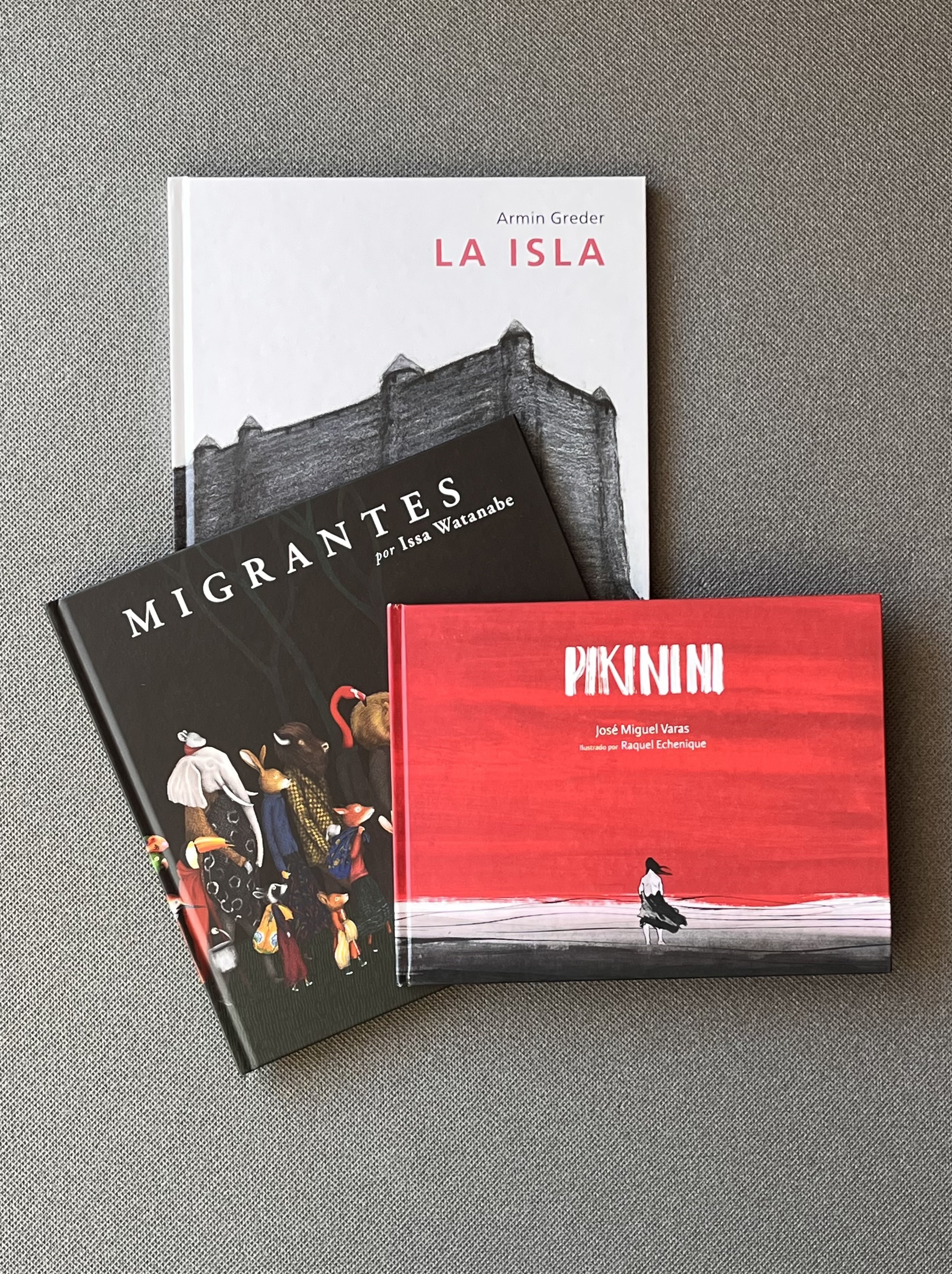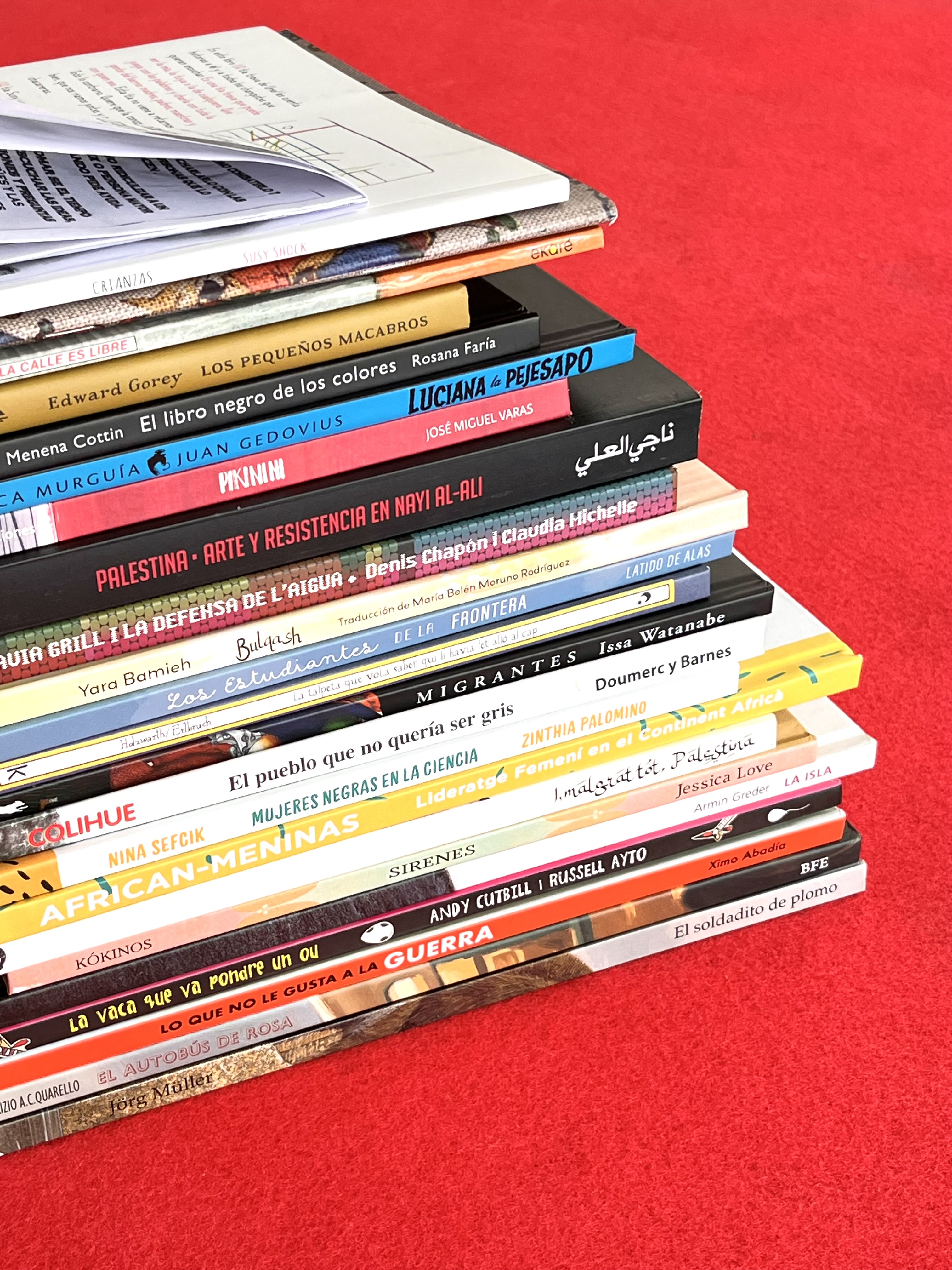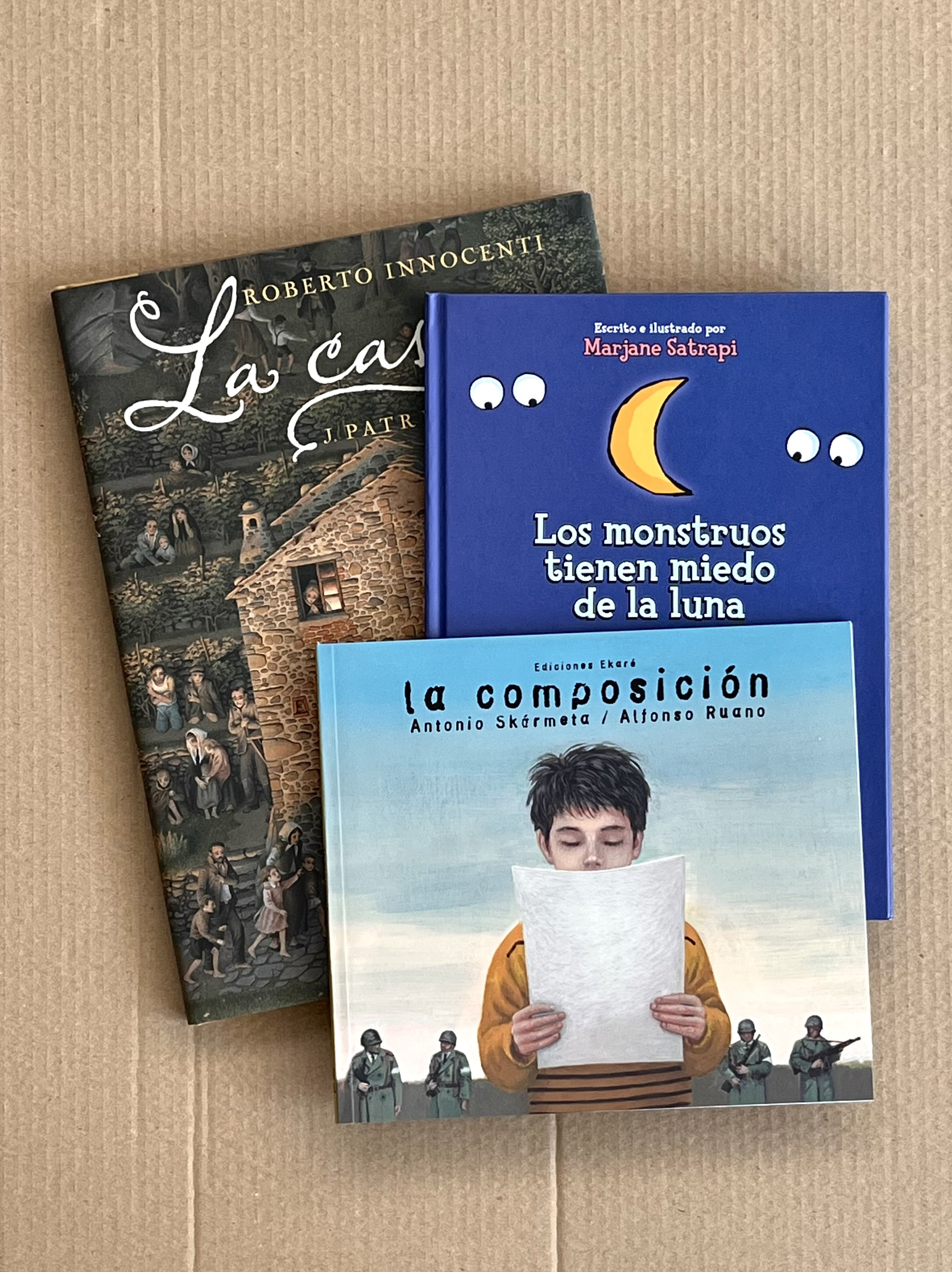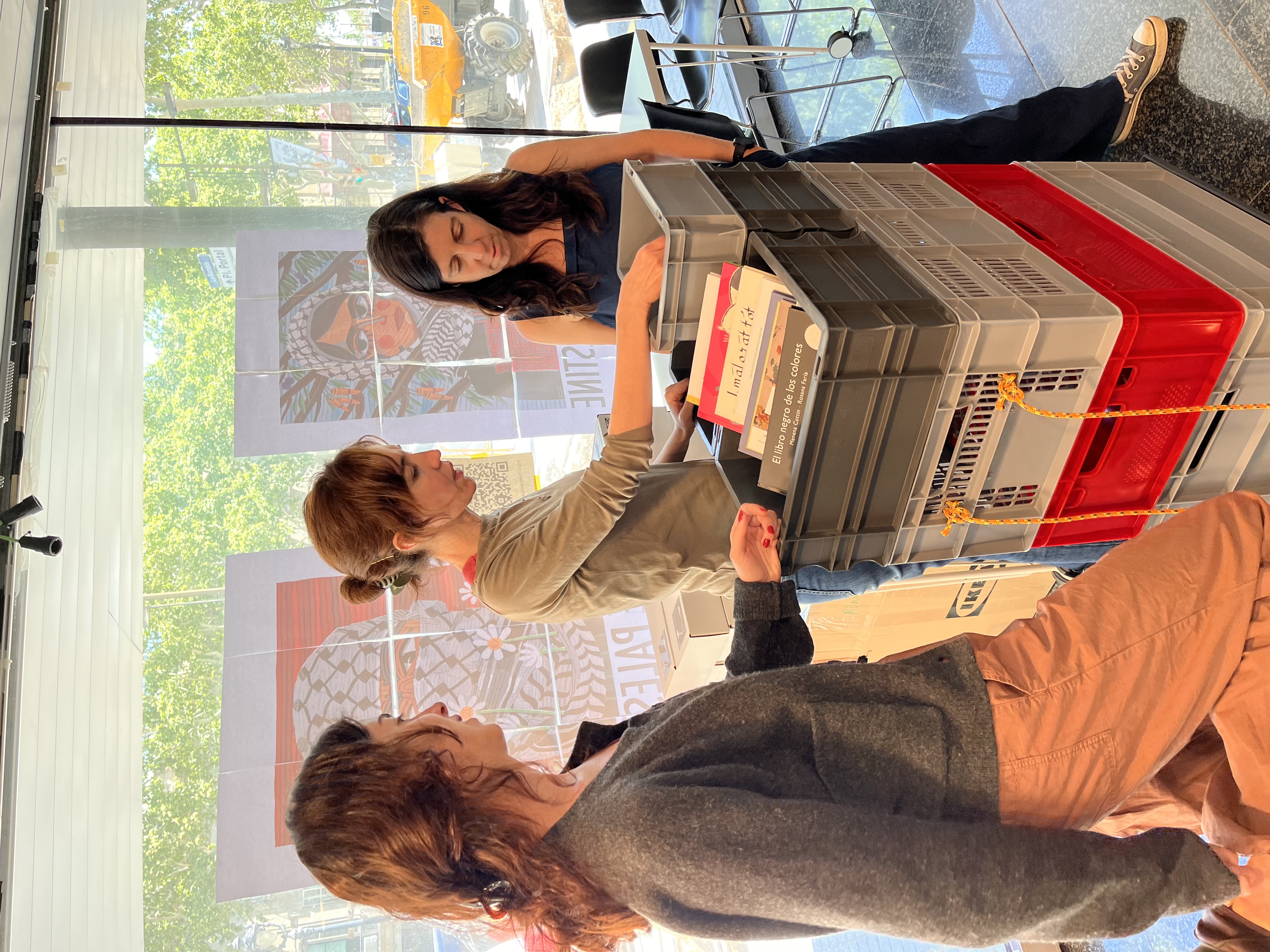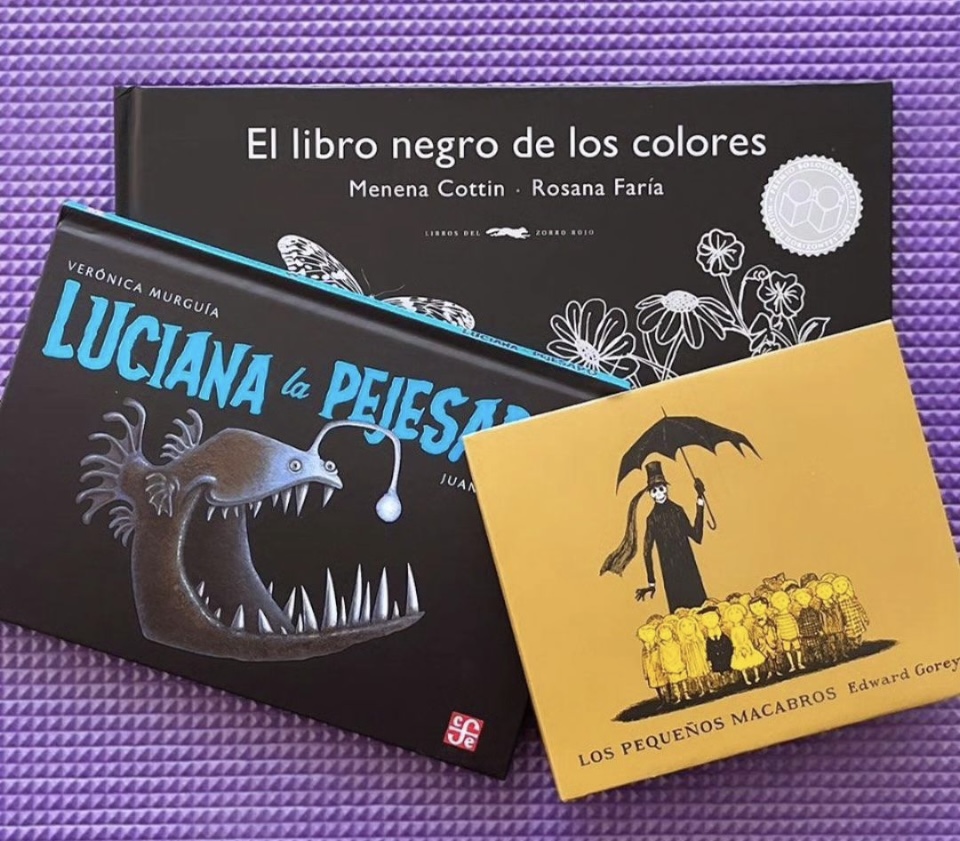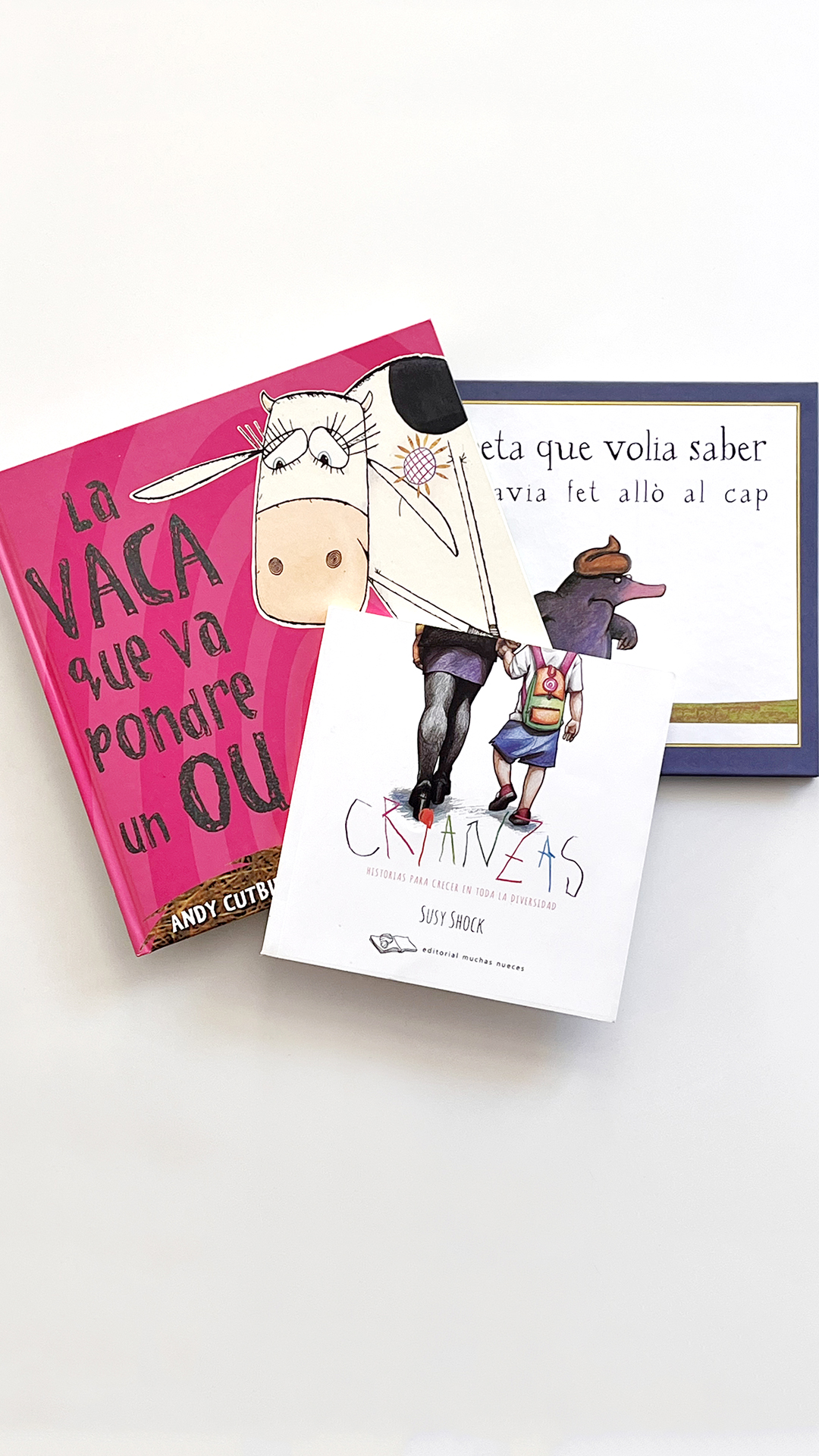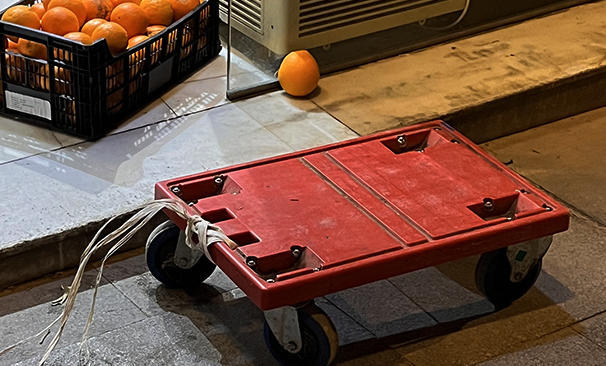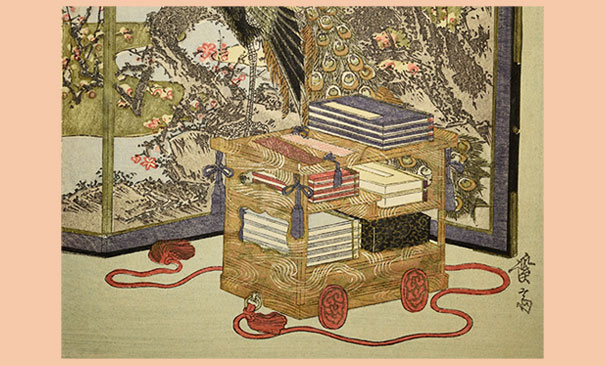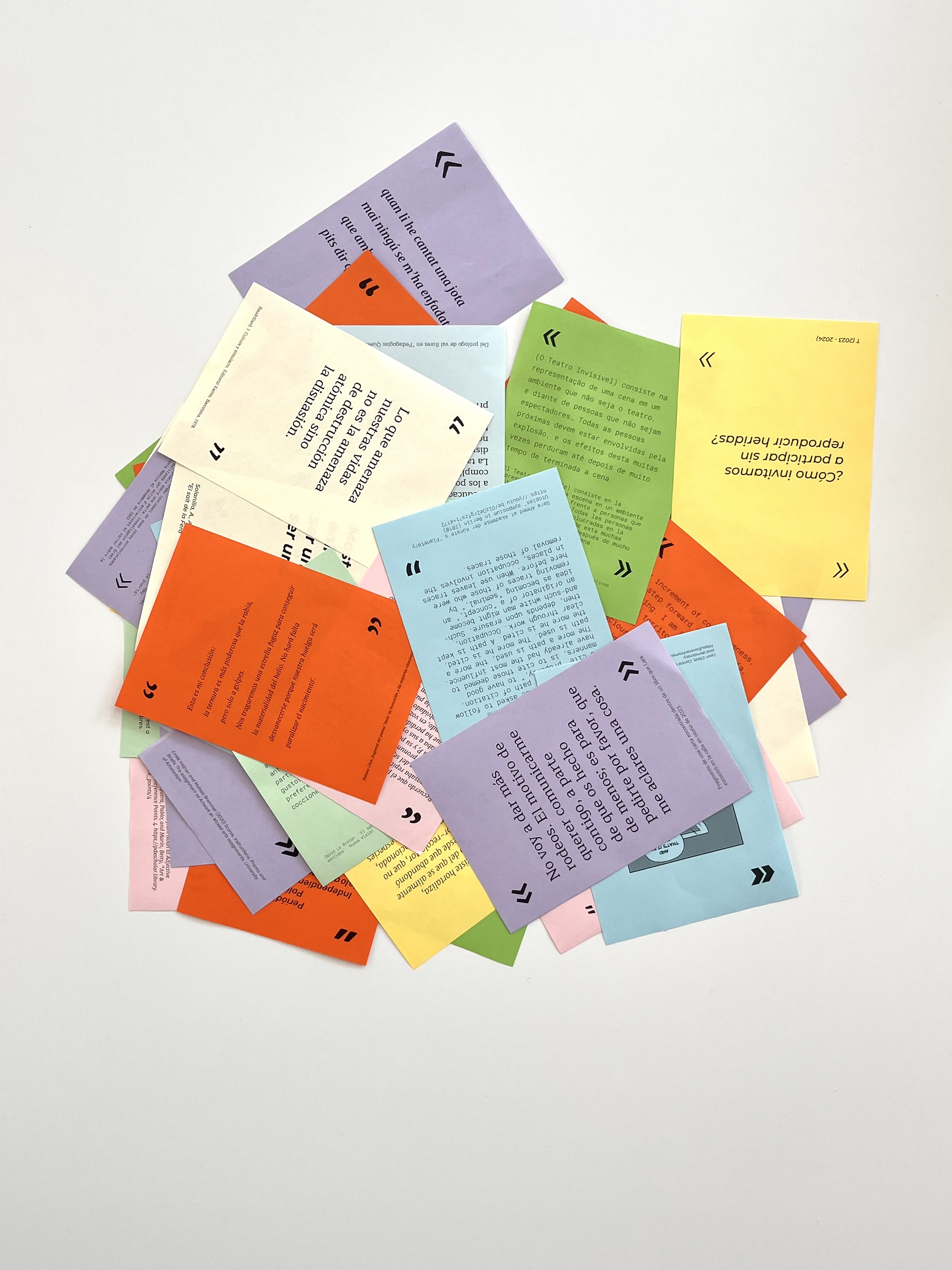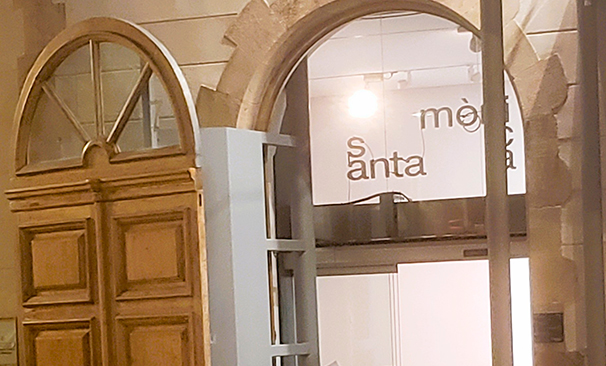What are you looking for?
You might be looking for...
FIU
An anti-colonial mobile library
Abstract
FIU is an anti-colonial library. It is a mobile device with books and albums that break with hegemonic and Eurocentric narratives. This library aims to be replicated in other spaces and expanded by new like-minded actors who share the same perspective.
The prototype consists of a structure made of reused plastic boxes and a base with wheels that allows a small library and a flexible reading space to be quickly deployed. The structure allows for the storage of the literary selection, as well as the material to create the spaces (pillows, mats, carpets and ropes).
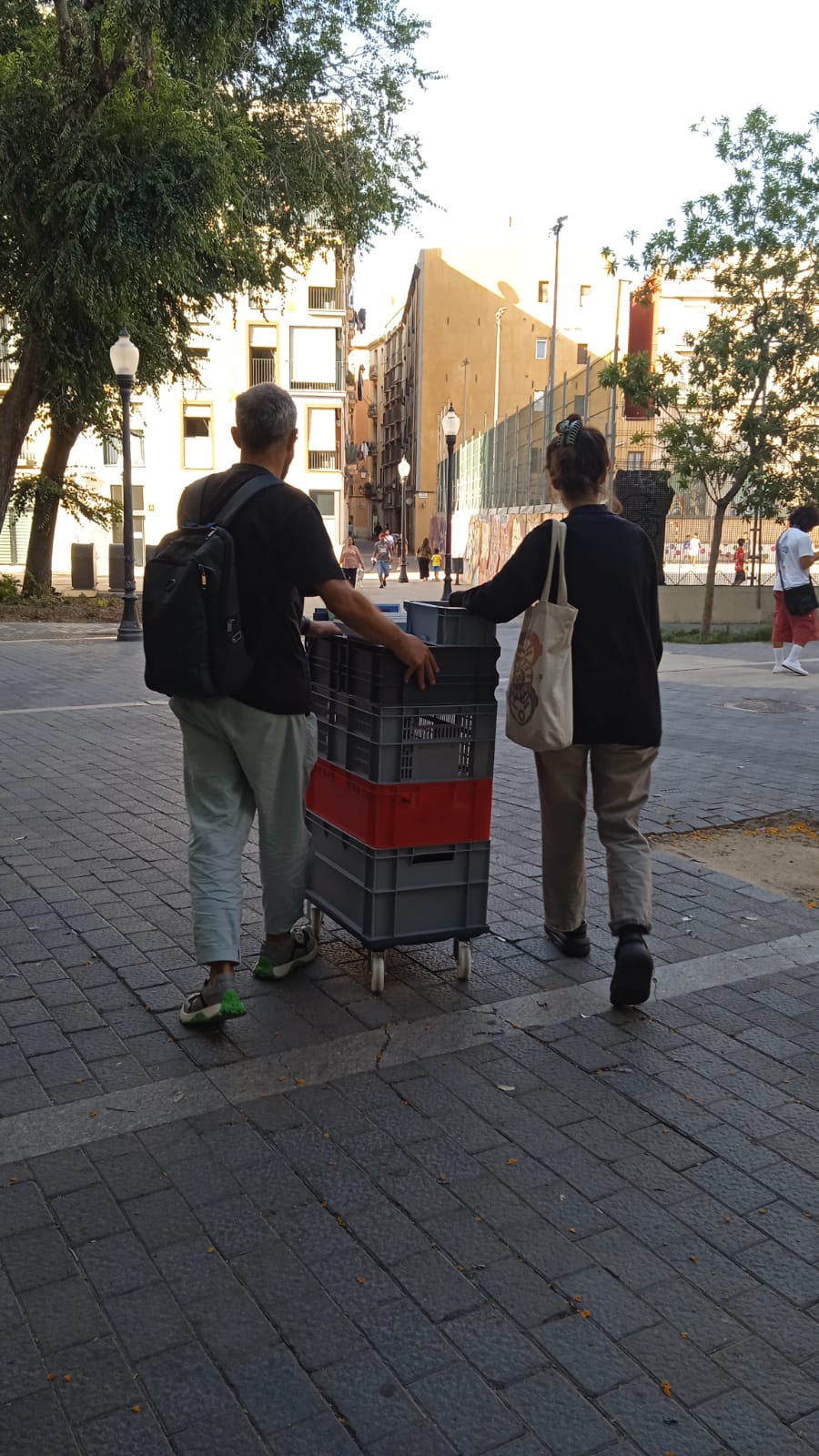
Our first exhibition at the Santa Mònica, when we started our residency, was Maroon Anti-Futurism, a project that sought, through different formats, to appeal to the senses and the organisation of the world that confront and resist the model of the future proposed by the West. From the guild, we thought of a device that would allow us to extend in time and space – beyond the duration of the exhibition – the poetic and political questions and conversations opened up by this exhibition proposal.
The prototype was developed with the aim of circulating anti-colonial readings in the Raval, the Barcelona neighbourhood where the Santa Mònica is located, which has a high level of cultural diversity and an educational system that reinforces Eurocentric modes and references. We have also taken into account that children are often excluded from projects with an anti-racist and anti-colonial perspective.
For the formal part of the project – that of the container – we started from very diverse references that we compiled in fanzines with visual references that we call refzins.
BACKGROUND
For the creation of the library:
- Plastic boxes. We recommend reusing old ones.
- Thick pieces of wood shaped like the base of the boxes
- Wheels.
- Ropes, pillows, mats, etc.
For the creation of the literary collection:
- Conversations with different cultural agents, artists, activists and educators in the area.
INGREDIENTS
1. Select the space (or spaces) where the library will be located.
2. Gather all the necessary materials for the mobile library. Keep in mind that quantities and measurements will depend on the spaces' capacity.
3. Build the library structure according to the dimensions of the reference space.
4. Consult and review the collection proposed in the prototype. If it makes sense to you, consult with people working along similar lines to those in the library and supplement with new books and materials.
5. Collect your chosen reading list and fill your anti-colonial library.
STEPS
This first version of the library proposes a structure and a bibliographic collection based on the specific needs of the Raval neighbourhood. Although the proposed bibliographic collection is designed to work in different contexts, each territory has its own needs and it is positive that new titles be incorporated to work on these specific issues.
We also recommend developing a poster-sized visual map to accompany the library and explain its different aspects to users. This map should include the library's collection as well as all the people and actors involved in the project.
RECOMMENDATIONS AND ADVICE
Materialisations
Publishing Guild Prototype 23-24
Antonis Antoniou, Verónica Lahitte and Carla Lupa
To create the library's inaugural collection, we had conversations with Val Flores, Diego Falconí, Pluriversidad Nómada (Ce Quimera + Lucía Egaña), Macarena García, Nadia Jabr, María Berríos, Karo Moret, Jesús Arpal and Sujeydi García.
Design of the visual map:
Antonio Gagliano.
Acknowledgements:
La Caníbal, Escola Drassanes and Impulsem.
PROTOTYPE CREDITS 23-24
* This recipe is based on documentation of the entire process. For more details, contact us at santamonica@gencat.cat.
